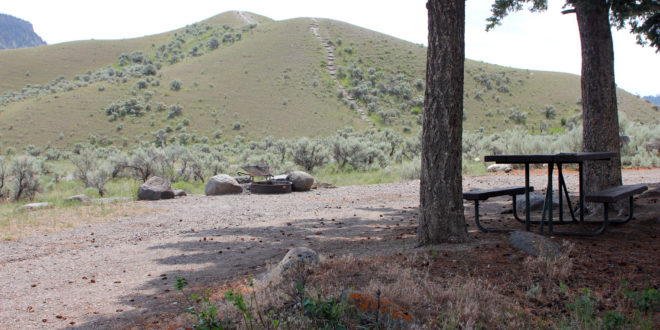Yellowstone National Park will replace a sewer line that reportedly led to the Gardiner Sewer District filing a lawsuit over arsenic leaching.
The replacement will come sometime in the next two years.
Last December, the Gardiner-Park County Water and Sewer District sued the park after perceived “feet dragging” when it came to addressing the issue. Although Yellowstone officials offered to help with sludge removal, the district felt the “high level of arsenic infiltration” warranted swifter action.
The lawsuit seeks to have the National Park Service pay for the district’s sludge removal related to its share of arsenic infiltration, as well as monitor its sewage lines and release quarterly reports. The suit is also seeking miscellaneous damages related to the issue.
Park spokeswoman Morgan Warthin previously said the Interior Department was reviewing the lawsuit.
Indeed, according to the Bozeman Daily Chronicle, the Interior just sent a letter to the district saying it would remove “2,700 feet of clay sewer line near Mammoth Hot Springs and replace it with PVC pipe.” The pipes in question are located between the Yellowstone youth campus and Mammoth. From the Chronicle:
The Interior attorney, Colleen Burnidge, wrote that the pipe project may take two years to complete, but they think it will help solve the problem.
“We believe that this project will address arsenic inflow and infiltration into the District’s sewage line,” she wrote.
Yellowstone National Park spokeswoman Morgan Warthin said in an email that the project has been funded and would begin either this year or next year. She couldn’t say how much the project would cost or whether it was a result of the lawsuit or a previously planned improvement.
She said they couldn’t give out further details because it’s part of a lawsuit.
Todd Shea, an attorney for the Gardiner-Park County Water and Sewer District, declined to comment.
The letter makes no mention of whether the NPS will contribute to sludge removal in Gardiner, but Burnidge notes that issue is best left up to the parties.
High arsenic infiltration was first seen in the district in February 2015, according to the Chronicle, when an engineer tested samples in the facility. According to the engineer’s complaint, the park’s sewerage showed nearly 40 times the amount of arsenic as the Gardiner sewage.
Gardiner has handled Mammoth Hot Springs’ sewage for decades.
According to the Chronicle, the Montana Department of Environmental Quality directed the district to empty its sludge ponds, which are used to treat wastewater. The engineer replied that the ponds could not be emptied until the park addressed its own arsenic problems.
In addition to arsenic around Mammoth, other parts of the park have had to worry about arsenic infiltration. Last summer, we reported trace levels of arsenic were found in Old Faithful’s drinking water supply. Although the levels were just one point above the Environmental Protection Agency’s compliance limit, the park was nonetheless directed to address the issue swiftly and forcefully.
Arsenic, a semi-metallic element, occurs naturally in rock formations; over-concentrations of arsenic in people can cause stomach pain, numbness of appendages, partial paralysis and even blindness, according to the EPA.
 Yellowstone Insider Your Complete Guide to America's First National Park
Yellowstone Insider Your Complete Guide to America's First National Park





